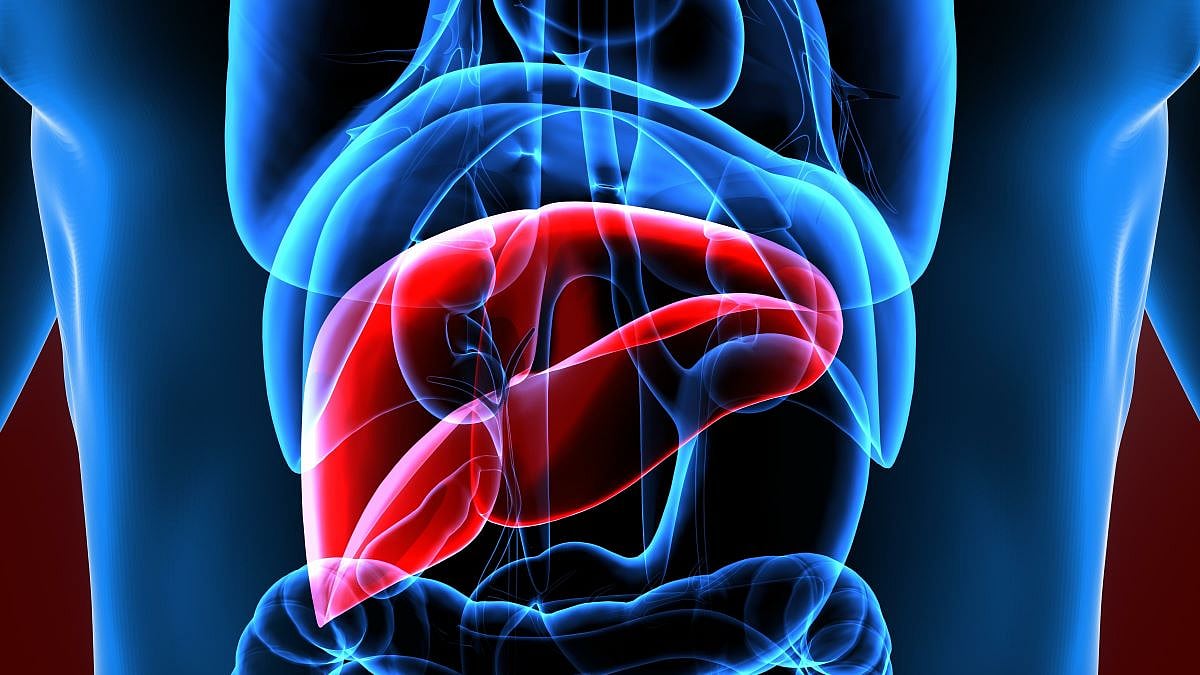Manténgase sano!

- Posted September 16, 2024
Ozempic Could Curb Progression of Diabetes-Linked Liver Disease
Fatty liver disease linked to diabetes and obesity can easily progress to liver cirrhosis, but new research suggests that GLP-1 medicines like Ozempic can help stop that.
In a new decades-long study, veterans with diabetes and what's known as metabolic dysfunction-associated steatotic liver disease (MASLD) were 14% less likely to progress to cirrhosis if they'd taken a GLP-1, compared to other diabetes meds.
One GLP-1 med, semaglutide (Ozempic/Wegovy), seemed especially potent in this regard, according to a team led by Dr. Fasiha Kanwal, a professor of gastroenterology at Baylor College of Medicine in Houston.
Overall, the use of GLP-1 meds "was associated with a lower risk of progression to cirrhosis and death," Kanwal's team reported Sept. 16 in the journal JAMA Internal Medicine.
They noted that the medicine must be taken early in the course of MASLD: GLP-1s did not help people whose MASLD had already progressed to liver cirrhosis.
A healthy liver has a fat content of just 5% or less by weight, but in MASLD fat can rise to unhealthy levels that put people at risk for cirrhosis, liver cancer or even the need for a liver transplant. Obesity and diabetes are prime risk factors driving fatty liver disease.
In the new study, the Houston team looked at data from over 32,000 people with diabetes and MASLD who were all cared for at VA hospitals.
Participants averaged about 67 years of age. Half had received a GLP-1 drug such as semaglutide (Ozempic), liraglutide (Saxenda) or dulaglutide (Trulicity) as diabetes treatment, while the other half were in similar health but received another class of diabetes meds, called DPP-4s, instead.
Outcomes were tracked from 2006 through to the end of 2022.
According to the researchers, GLP-1 use cut a patients' overall odds of progressing to cirrhosis by 14% compared with people taking a DPP-4. The odds of dying during the study period also fell by 11% among GLP-1 users.
These healthy effects typically became apparent within 18 to 24 months of using a GLP-1.
"The protective association was not seen in patients with existing cirrhosis, underscoring the importance of treatment earlier in the [MASLD] disease course," Kanwal's group said.
How are GLP-1s working their magic on the liver?
According to the researchers, these drugs "reduce body weight, glycemia [blood sugar issues] and inflammation -- actions that could reduce the risk of MASLD progression."
In fact, prior trials have found that GLP-1 meds can even reverse fatty liver disease altogether, Kanwal's team added.
At its worst, fatty liver disease and cirrhosis can lead to liver cancer. However, the researchers say the numbers of liver cancer cases in the study was not large enough to determine whether GLP-1s could lower liver cancer risks as well.
Newer GLP-1 medications in the pipeline might offer even bigger benefits against MASLD.
In late 2023, Eli Lilly reported that its experimental GLP-1 drug, retatrutide, reduced fat in the livers of obese people who took it.
And in June, a trial published in the New England Journal of Medicine found that an expermental GLP-1 drug called survodutide also improved liver heath in (83%) of patients with fatty liver disease. That study was funded by the drug's developer, Boehringer Ingelheim.
More information
Find out more about MASLD at the Cleveland Clinic.
SOURCE: JAMA Internal Medicine, Sept. 16, 2024

